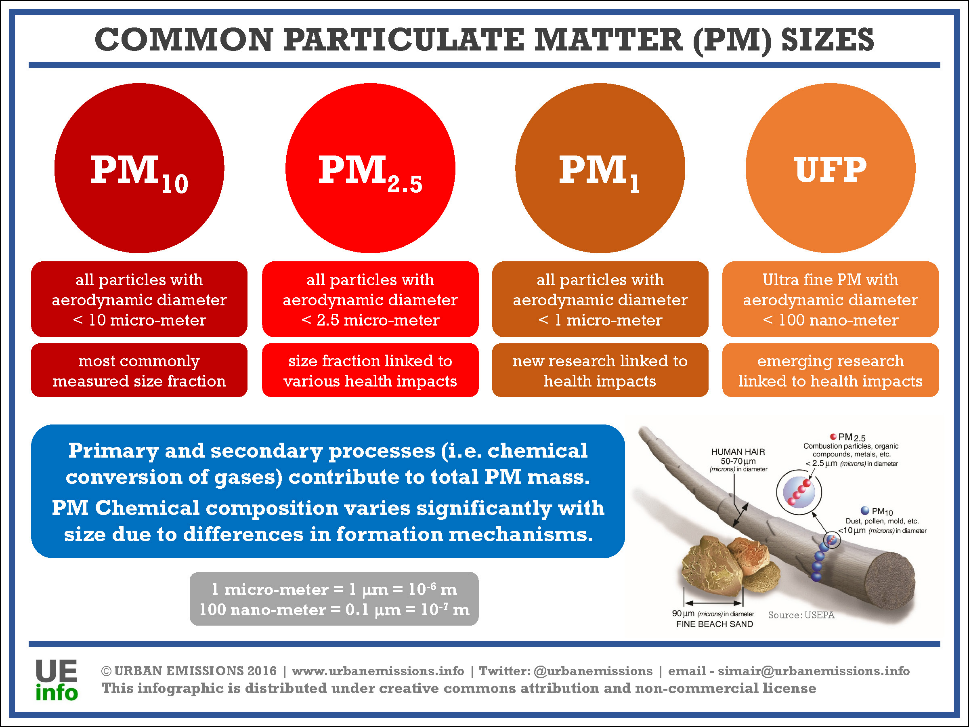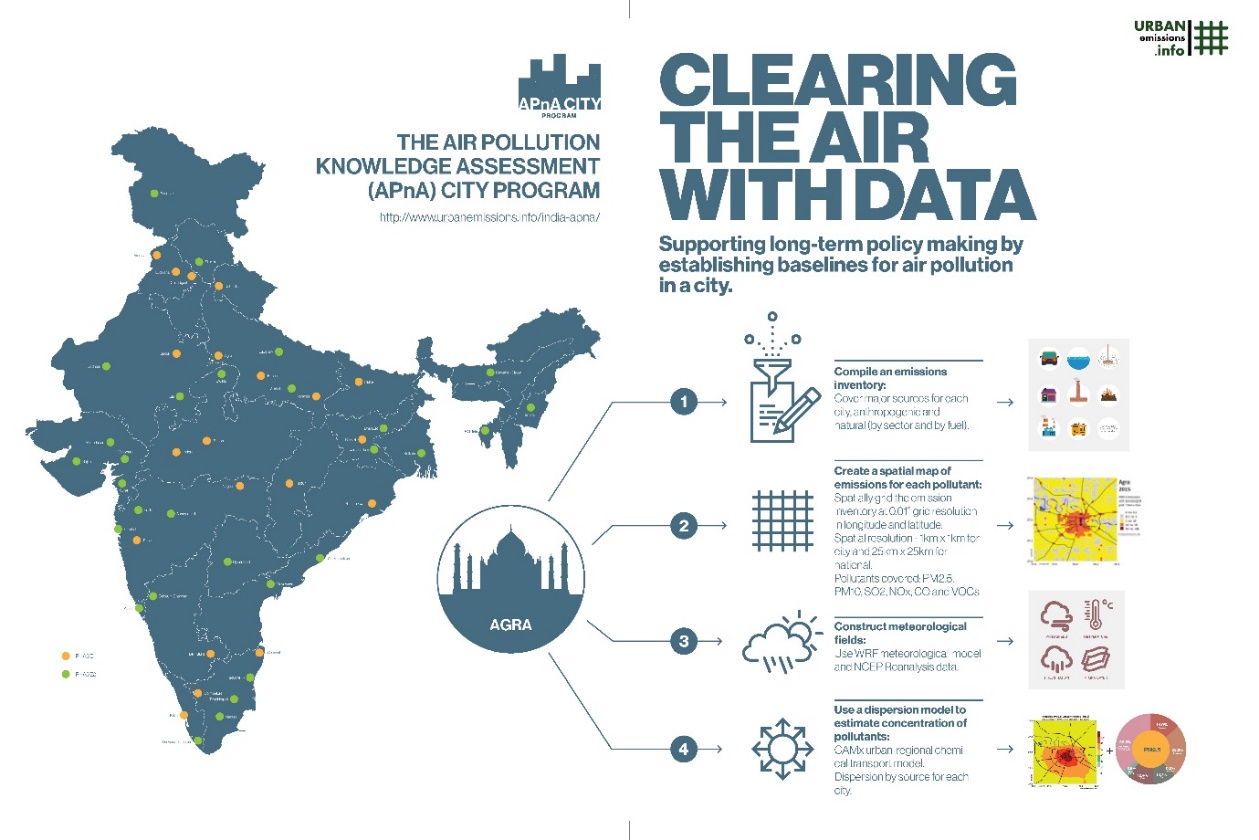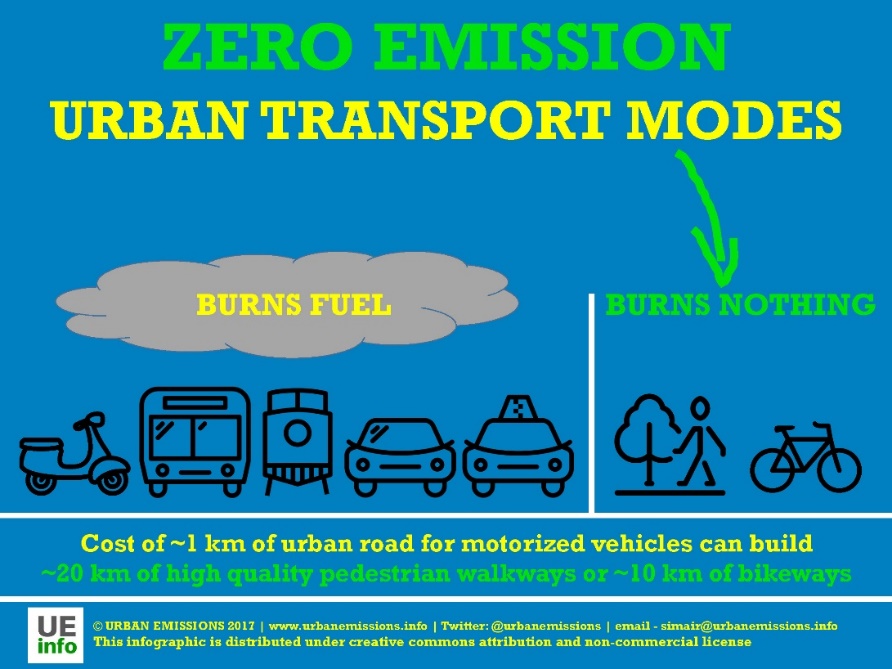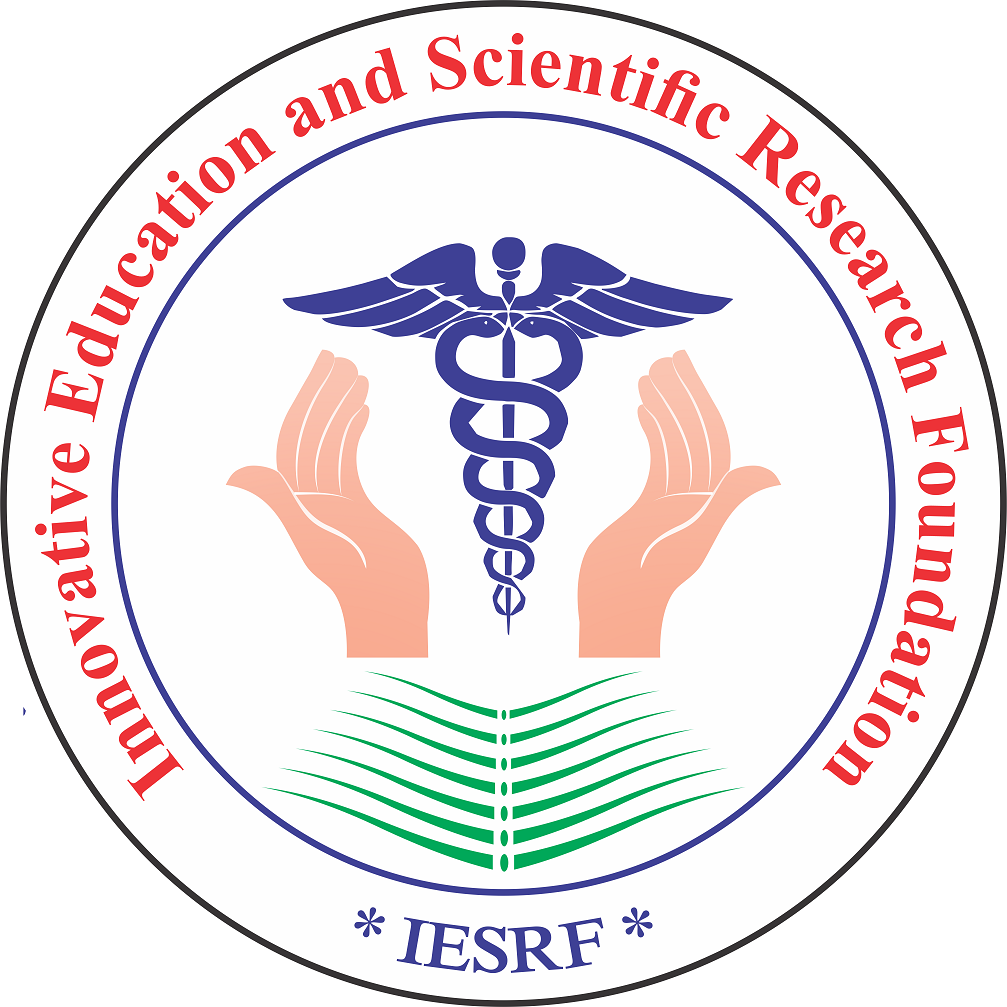- Visibility 284 Views
- Downloads 27 Downloads
- DOI 10.18231/j.ijfcm.2024.031
-
CrossMark
- Citation
Introduction
These days, air contamination is known to be firmly connected with monetary development, populace, and energy utilization. There is a chain connection between the support of monetary turn of events and improvement in the expectations for everyday comforts, populace development, expanded interest in energy, and expanding the creation and discharge of air poisons. Extremely enormous fragments of the populace in the metropolitan regions inhale air that does not fulfil European guidelines not to mention the World Health Organisation Air Quality Guidelines. Findings that particulate matter (PM) which is a main cause of air pollution, not only has a greater impact on established health endpoints but is also associated with a wider range of disease outcomes have significantly increased over the past ten years. One such review analysed examples of air quality discernments in Dallas and Houston, Texas to more readily comprehend the central point that shapes the public impression of air quality.[1] According to him, by examining socio-economic characteristics, patterns of local risk perception, and the relationship between perceived and measured air quality, it was discovered that perceptions of air quality did not significantly correlate with measured air quality criteria. Instead, it appeared that socioeconomic characteristics, location, and access to information influenced perceptions of air quality.
According to a recent World Bank research report[2] released in June 2024, 1.67 million deaths in India in 2019 were attributed to air pollution, which accounted for 17.8% of all deaths in the nation. These deaths were caused by exposure to PM 2.5. Pollution's negative effects on health also come at a high economic cost. An estimated US $36.8 billion, or around 1.36% of India's GDP, was lost economically because of premature deaths and sickness brought on by air pollution. India is addressing this issue in several important ways. In addition to strengthening industry and vehicle emission restrictions in recent years, the Indian government plans to revise its ambient air quality requirements. India's efforts to reduce air pollution include distributing LPG cooking fuel to millions of homes, encouraging electric vehicles, and prioritizing growing renewable energy. The National Clean Air Programme (NCAP) of the Indian government is a significant step in recognizing and addressing the issue of declining ambient air quality. The NCAP has set a time-bound target to improve air quality nationwide with an emphasis on the approximately 132 "non-attainment" cities—those whose air pollution regulations are not being met. With recommendations for policy in a variety of areas, the NCAP gives cities a general framework for creating plans for managing air quality. The Government of India allocated approximately $1.7 billion in 2020 to combat air pollution over the next five years for the 42 Indian cities with a population of one million or more, based on the recommendations of the 15th Finance Commission. This is assuming that the cities lower their air pollution levels by 15 percent annually. This is the first fiscal transfer funding program for urban air quality control that is performance-based in the world.
Methodology
Unchecked deforestation, industrialization, urbanization, and population growth all contribute to the problem of poor air quality, which has the potential to lower our standard of living. Air pollution has a detrimental effect on trees, livestock, and other living things, demonstrating the intimate relationship between human existence and air quality. The current review is based on the effects of air pollution in the current situation. Particulate matter (PM2.5 and PM10) along with ozone, sulphur dioxide, carbon monoxide, and nitrogen dioxide affect the wellbeing of people around the globe. The literature perused for the review is short-listed based on the extent of the study encompassed within them. This article explores the hazardous effects of air pollution and is an attempt to generate a common awareness among people.
Discussion
The W.H.O. has positioned air contamination as one of the major natural wellbeing gambles, and the single greatest ecological danger to human health. Around the world, it is assessed that 4.2 million and 3.8 million unexpected losses were owing to outside and indoor air contamination, separately.[3] There is more proof of the unfavourable well-being impacts of particulate matter.[4] Particulate matter comes from a variety of sources (natural or human-caused, indoor or outdoor), formation processes, composition (organic or inorganic), and sizes (ultrafine: PM0.1; fine: PM2.5; coarse: particles with diameters greater than or equal to PM10); Poor air quality is blamed on ozone, nitrogen dioxide, sulphur dioxide, and carbon monoxide, as well as particulate matter with aerodynamic diameters of less than 2.5 millimetres (PM2.5) and less than 10 millimetres (PM10) ([Figure 1]). The molecule size can impact whether the particulate matter can cross the blood-mind boundary and, alongside terms of openness, increment the gamble of unfavourable well-being impacts. The lung is penetrated more deeply by smaller particles, which has a greater impact on health. The most grounded proof of unfavourable consequences for well-being is PM2.5, with a broad assortment of proof connecting outside PM2.5 openness to mortality, cardiovascular illnesses, aspiratory sicknesses, and malignant growth.[4], [5] Thus, adjusting openness to unfortunate air quality in indoor and outside conditions could diminish the populace level weight of chronic weakness. Inequality in air quality exposure and socioeconomic status have been linked in several studies. Insights research permits researchers to even more likely comprehend the variables and inspirations that influence how the public perspectives subjects of interest. This is necessary not only to record the level of public understanding of the subject but also to learn how and why the public prioritizes and interprets these subjects. Understanding these issues assists established researchers in recognizing information holes and cultural variables that might be propagating these holes. A few investigations have evaluated the view of air quality utilizing overview research.

Air pollution is regarded as a serious problem that causes a variety of issues, including climate change, a decrease in biodiversity, effects on crops and agricultural production, and soil acidification.[6], [7] Air pollution was blamed for 4.2 million premature deaths in both developed and developing nations in 2016,[8] with 91% of these deaths occurring in low- and middle-income nations, including South-East Asia and the Western Pacific. According to multiple studies, residents of low-level social and economic regions encounter elevated levels of air pollution.[9], [10] Several health conditions have been linked to air pollution, including autoimmune diseases,[11] cardiovascular disease,[12] pulmonary conditions like asthma and lung cancer, neurocognitive disorders like Parkinson's disease, and developmental conditions like autism.[13] Similarly, many studies at times suggested and supported the fact that a variety of diseases, including respiratory diseases (asthma, bronchitis, pneumonia), various types of allergies, disturbances of the central nervous system, and circulatory issues are caused by exposure to a polluted environment. To check and control this, the fundamental and inborn benefits of foundation the regulations, methodologies, and strategies in the fields of air contamination are preventive estimation and the necessity to control the air contamination in discharge sources, further developing the air quality and staying away from negative wellbeing results.
Air pollution control endeavours date to over a long time. The Chicago regulation (1881), smoke reduction in Boston in the Territories of America (1910-1912), and Clean Air Act (1925) following the "Extraordinary London Exhaust cloud" in the UK are the earliest systems for air contamination control.[14] However, after this, several international and some national and local laws and programs have been enacted. According to Horowitz[15] and Rogelj et. al.[16] international actions like the Paris Agreement (2015) recommend to nations that governmental authorities reduce global warming to below 2°C and prevent the dangerous effects of climate change. At the mainland level, orders relating to the European Association instituted the quality rules for air poisons and the show on lengthy reach trans-limit air contamination and conventions connected with emanation decreases for explicit air poisons. The introduction of vehicle exhaust catalysts, the prohibition of solid fuel use in homes, and low-emission zones are the most common local preventive measures against air pollution.[17] Street transportation is known as the principal hotspot for air contamination. Air pollution can also be caused by domestic, commercial, and industrial activities. It accounted for more than 70-80% of air contamination in enormous urban communities in agricultural nations is ascribed to ozone-harming substance discharges from many broken-down vehicles joined with unfortunate vehicle upkeep, unfortunate street construction, and unfortunate fuel quality.[18], [19], [20] World Health Organization[8] reports that 91% of the world's population experienced air quality below standard values in a 2016 WHO report. Air pollution comes from a variety of sources, but the main contributors are industrial operations and motor vehicles.
Additional significant ecological effects of air pollution include acid rain, temperature inversions, and changes in the global climate brought on by the emissions of greenhouse gases into the atmosphere. Air pollution will be significantly and negatively impacted by global climate change. Our capacity to model these changes is constrained by our comprehension of the many multifaceted interactions between air pollution and climate change in the context of contemporary scenarios. Air pollution will interact with changes in temperature, precipitation, and natural catastrophe patterns. For instance, an increase in hot, sunny days may cause ozone, a secondary pollutant, to be produced. Higher temperatures can accelerate the oxidation process in the atmosphere, increasing the risk of sulfuric and nitric acid deposition. They can also increase wildfire frequency and intensity, increase flooding, which can increase exposure to mycotoxins, and fuel the growth of pollen-producing plants, which raises aeroallergen levels. Global warming may cause temperatures to rise, which could result in a variety of extreme weather conditions and climate events, such as heat waves, droughts, and even fire dangers.
Conclusion
The modern civilized world is very concerned about air pollution because it poses a substantial toxicological risk to both the environment and human health. Air pollutants are any substances in the air that may hurt the environment or human health. Every person has the right to a clean environment, which includes the right to clean air, according to a 2022 United Nations declaration. This historic resolution emphasizes how closely our settings, which have the power to either improve or worsen health, affect our lives and our health. From an ecological standpoint, air pollution can seriously harm the air, soil, and groundwater. It poses a severe risk to the variety of life as well. Research on the connection between declining species variety and air pollution amply demonstrates the negative consequences of environmental pollutants on the extinction of plant and animal species. Animal reproductive impacts may also result from air-dispersed toxicants.
The World Health Organization (W.H.O.) and the Lancet Commission on Pollution and Health have both noted that air pollution should be one of the main concerns because it causes more than 6 million premature deaths annually. In addition to elderly adults and those with respiratory disorders, children who are impacted both during pregnancy and after delivery are also more vulnerable to the health impacts of air pollution. To continue taking appropriate mitigation measures, it is crucial to comprehend future patterns and projections of air pollution concentration and its effects on health. Globally, increased levels of environmental pollution and their impact on illness incidence are caused by inadequate regulation and a lack of proper policies. This will undoubtedly place a significant financial burden on the community. Determining standard values for air quality, a normal range for contaminants, and daily control of air pollution have become necessary due to the rising danger of diseases brought on by air contamination. As a result, keeping an eye on air quality is crucial for creating regulations. Every major city on the planet ought to adopt these. To ensure the effective reduction of pollutants, regulatory programs should impose high fees per unit of emission as a means of penalizing air polluters as well as raising the cost of pollution for them. The goal is to lessen pollution rather than only compensate polluters for their harm.
Additionally, there is a drought of information regarding the distinct effects of climate change on low- and high-income nations. We know catastrophic events and environmental change will meaningfully affect low-pay nations and more unfortunate populaces living in nations with less foundation, suitable structure plans, and assurances around well-being and natural approach. [21] Besides, increasing worldwide temperatures are related to more air contamination, [22] counting stagnation less ventilation, and more noteworthy creation of particulate matter (out-of-control fire smoke, airborne soil residue, ozone, and PM2.5). Elevated body temperature and inflammation, affect long-term medical conditions like heart, lung, and kidney disease. Heat likewise prompts more uneasiness burdensome side effects, and self-destructive ways of behaving; those with prior psychological sicknesses are bound to pass on in hot spells than those without dysfunctional behaviours. [23] To put emergent findings into action, policy stakeholders from a variety of industries must be involved.
In recent times in India context, a new wave of research, practice, and policy actions is are being sparked from several networks ([Figure 2]). This will empower us to acquire a further comprehension of the unpredictable and interconnected relationship among people, air contamination openness, and coming emotional wellness and prosperity impacts, during the ceaselessly changing air contamination sources and openness designs. The biggest portion of air contamination, particularly in huge urban areas, relates to transportation. There are more articles on transportation control strategies and policies than on any other topic, according to research. The use of emission standards, improved fuel quality, alternative fuels, traffic restrictions, and the use of less polluting vehicles like hybrids and electric vehicles are all important transportation-related policies and strategies. Technology is also used to improve vehicle efficiency. Eliminating solid fuels, particularly coal, and shifting fuel from coal to cleaner energy sources like electricity and natural gas have been the primary focus of preliminary studies on energy-related air pollution control policies and strategies. Numerous nations have switched to domestic use of this fuel. However, recent efforts by some governments to eliminate coal from industry, particularly power plants, demonstrate that coal is still an important fuel source in those nations.

Energy sources like wind and solar have garnered popularity in recent times. The establishment of air contamination control frameworks, utilization of clean energy, utilization of forward-thinking advances underway, and, if fundamental, the movement of modern offices are the main measures to control metropolitan air contamination connected with the business. The world must address both air pollution and mental health as major issues now and in the future. This makes their crossing point a doubly essential general well-being need. In the end, the learned information ought to be used in making decisions about air pollution interventions, urban and built environment design, land use planning, and behaviour modification. In most of the world's large nations, legislation, and policy interventions to reduce urban air pollution are frequently enacted and implemented. Governments can implement encouraging, supportive, or punitive air pollution control policies. Contingent upon the conditions, these approaches are carried out alone or mutually. Additionally, through a phased strategy (under its Country Partnership Framework), the World Bank has been supporting India in managing air quality. This strategy aims to improve knowledge, build capacity, involve stakeholders, transfer expertise in airshed management tools, facilitate analysis for policy adjustments, and mobilize finance for more effective government programs. The World Bank program is developing instruments to help state and regional approaches to air quality management, building on the work already being done within India's national strategic framework of the NCAP. These efforts will contribute to the creation of India's first State Air Quality Action Plans as well as the country's first extensive Regional Airshed Action Plan for the Indo-Gangetic Plains (IGP), which will cover seven states and union territories. Based on scientific evidence, measures like these will be given priority to eliminate the most air pollution at the lowest possible cost. The World Bank initiative assists the Network in establishing connections with academic institutions and state and local practitioners in the IGP states to conduct modelling and other air quality management activities. As part of the India Lighthouse initiative, professionals from India and other countries have been sharing their experiences to create practices tailored to India using cutting-edge technologies to better understand, manage, and control the country's entire air pollution problem.
The process of managing air quality is continuous. Incorporating it into the government's capacities and the conduct of individuals and enterprises is vital. Sufficient financing and a persistent emphasis on capacity building are necessary for this. The good news is that numerous other nations have shown that strong dedication and a well-thought-out, financially viable plan can effectively decrease air pollution. India has already implemented many of the crucial "sector transitions" required for air quality management because of its convergence with climate change. India, for instance, is leading the way in the revolution of solar energy. Currently, the 750 MW Rewa Solar Project in Madhya Pradesh provides 60% of Delhi Metro's daytime energy needs, lowering the city's reliance on coal and saving it more than $170 million in energy costs over the next 25 years.
The changing sources and features of pollution present obstacles to research on air pollution. Every year, there are different days with poor air quality due to a combination of factors including pollution emissions, weather fluctuations, and natural occurrences like dust storms and wildfires. Sustained investigation is required to address this complex problem. Despite these obstacles, there are chances to raise the standard of the air. There will be decreases in greenhouse gases and air pollutants linked to health issues because of the current shift to renewable energy sources and electric automobiles. Large-scale reductions in human activity are the exception, but the COVID-19 example and the notable improvements observed in nations that take decisive action against environmental pollution demonstrate that government policy and technological advancements provide a way forward for enhancing the quality of the world's air and environment. To collect more data on exposure to combined exposures of air pollutants, particularly indoors, future work must concentrate on determining which climate adaptation strategies offer co-benefits for clean air; identifying the populations most at risk from air pollution exposure, and creating treatment plans based on research; and utilizing contemporary statistical methods and the development of low-cost sensors.

These solutions' benefits and weak aspects need to be meticulously recorded. The most contentious topic when it comes to managing and reducing air pollution is automobile taxes. Before imposing fines, it would be beneficial to provide all required amenities, such as subway and other transit networks. Stated differently, taxes ought to be implemented; nevertheless, the enhancement of public transit networks and their affordability should also be prioritized. It is critical to weigh each recommended tactic fairly and go over every facet of each strategy. These regulating laws all affect one another as well as society. An ideal solution to the issue of air pollution would be one in which regulating laws imposed on society would not cause any new problems. Penalties for each unit of air pollution emission should therefore be included in a suitable regulatory policy. The sources of emissions range from small amounts of cigarettes to massive amounts of emissions from industrial processes and car engines ([Figure 3]). All rules and regulations pertaining to air pollution must be updated by the legislators and policymakers in these nations. A strong environmental protection agency must oversee coordination amongst the various departments involved in air pollution. Sufficient funding for management, R&D, oversight, and complete environmental control—including air pollution—is essential for an efficient environmental protection agency.
Source of Funding
None.
Conflict of Interest
None.
References
- SD Brody, BM Peck, WE Highfield. Examining localized patterns of air quality perception in Texas: A spatial and statistical analysis. Risk Anal 2004. [Google Scholar]
- . Catalysing Clean Air in India. 2024. [Google Scholar]
- . . WHO global air quality guidelines: particulate matter (PM2.5 and PM10), ozone, nitrogen dioxide, sulfur dioxide and carbon monoxide 2021. [Google Scholar]
- MR Heal, P Kumar, RM Harrison. Particles, air quality, policy, and health. Chem Soc Rev 2012. [Google Scholar]
- P Kumar, L Morawska, W Birmili, P Paasonen, M Hu, M Kulmala. Ultrafine particles in cities. Environ Int 2014. [Google Scholar]
- E Paoletti, M Schaub, R Matyssek, G Wieser, A Augustaitis, A Bastrup-Birk. Advances of air pollution science: from forest decline to multiple-stress effects on forest ecosystem services. Environ Pollut 2010. [Google Scholar]
- ZD Li, E Data, ITD Dai. Japan-China comparative analysis on measures against sulphur dioxides pollution. 1999. [Google Scholar]
- . Ambient (outdoor) air quality and health. World Health Organization 2018. [Google Scholar]
- ML Bell, K Ebisu. Environmental inequality in exposures to airborne particulate matter components in the United States. Environ Health Perspect 2012. [Google Scholar]
- GC Chi, A Hajat, CE Bird, MR Cullen, BA Griffin, KA Miller. Individual and neighbourhood socioeconomic status and the association between air pollution and cardiovascular disease. Environ Health Perspect 2016. [Google Scholar]
- A Gawda, G Majka, B Nowak, J Marcinkiewicz. Air pollution, oxidative stress, and exacerbation of autoimmune diseases. Cent Eur J Immunol 2017. [Google Scholar]
- CA Pope, RT Burnett, GD Thurston, MJ Thun, EE Calle, D Krewski. Cardiovascular mortality and long-term exposure to particulate air pollution: epidemiological evidence of general pathophysiological pathways of disease. Circulation 2004. [Google Scholar]
- A Ghorani-Azam, B Riahi-Zanjani, M Balali-Mood. Effects of air pollution on human health and practical measures for prevention in Iran. J Res Med Sci 2016. [Google Scholar]
- RW Hardie, GR Thayer, A Barrera-Roldán. Development of a methodology for evaluating air pollution options for improving the air quality in Mexico City. Sci Total Environ 1995. [Google Scholar]
- CA Horowitz. Paris agreement. Int Leg Mater 2016. [Google Scholar]
- J Rogelj, MD Elzen, N Höhne, T Fransen, H Fekete, H Winkler. Paris agreement climate proposals need a boost to keep warming well below 2 C. Nature 2016. [Google Scholar]
- GS Santos, I Sundvor, M Vogt, H Grythe, TW Haug, BA Høiskar. Evaluation of traffic control measures in Oslo region and its effect on current air quality policies in Norway. Transp Policy 2020. [Google Scholar]
- A Singh, H Gupta, K Gupta, P Singh, V Gupta, R Sharma. A comparative study of air pollution in Indian cities. Bull Environ Contam Toxicol 2007. [Google Scholar]
- H Wang, L Fu, Y Zhou, X Du, W Ge. Trends in vehicular emissions in China’s mega cities from 1995 to 2005. Environ Pollut 2005. [Google Scholar]
- T Zhou, J Sun, H Yu. Temporal, and spatial patterns of China’s main air pollutants: years 2014 and 2015. Atmosphere 2017. [Google Scholar]
- M Rao. Mental health impacts of the climate crisis: the urgent need for action. Int Rev Psychiatry 2022. [Google Scholar]
- SC Anenberg, S Haines, E Wang, N Nassikas, PL Kinney. Synergistic health effects of air pollution, temperature, and pollen exposure: a systematic review of epidemiological evidence. Environ Health 2020. [Google Scholar]
- P Cianconi, S Betrò, L Janiri. The impact of climate change on mental health: a systematic descriptive review. Front Psychiatry 2020. [Google Scholar]
How to Cite This Article
Vancouver
Dubey S. Air quality deterioration and its impact on environment and humans [Internet]. Indian J Forensic Community Med. 2025 [cited 2025 Sep 08];11(4):141-146. Available from: https://doi.org/10.18231/j.ijfcm.2024.031
APA
Dubey, S. (2025). Air quality deterioration and its impact on environment and humans. Indian J Forensic Community Med, 11(4), 141-146. https://doi.org/10.18231/j.ijfcm.2024.031
MLA
Dubey, Shivam. "Air quality deterioration and its impact on environment and humans." Indian J Forensic Community Med, vol. 11, no. 4, 2025, pp. 141-146. https://doi.org/10.18231/j.ijfcm.2024.031
Chicago
Dubey, S.. "Air quality deterioration and its impact on environment and humans." Indian J Forensic Community Med 11, no. 4 (2025): 141-146. https://doi.org/10.18231/j.ijfcm.2024.031
